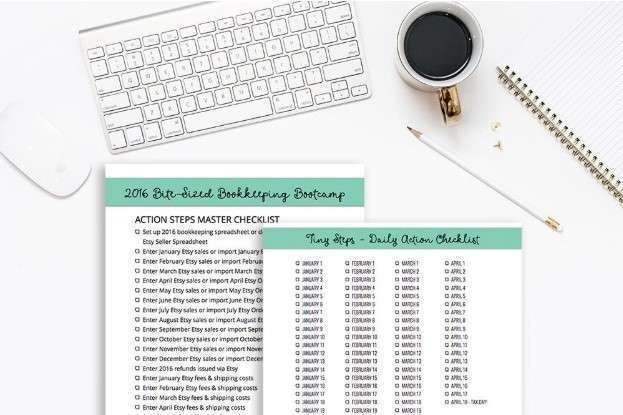
Rights and obligations validates the entity’s legal title over assets and its responsibility to repay liabilities. Completeness – this means that transactions that should have been recorded and disclosed have not been omitted. The affirmation states that the assets belong to the company; thus, the company has legal liability for paying the obligations. As we ask questions, we also inspect documents (e.g., bank reconciliations) and make observations assets = liabilities + equity (who is doing what?).
- Let’s consider the account “Accounts Receivable” (A/R) from a company’s balance sheet and see how auditors might approach relevant assertions with respect to this account.
- The accuracy assertion shows transactions have correct amounts without errors.
- In the warehouse those entries are vouched to the tangible inventory-support for existence.
- The company suffered a fictitious vendor fraud during the year, so the occurrence assertion has uncertainty.
- If the auditor is unable to obtain a letter containing management assertions from the senior management of a client, the auditor is unlikely to proceed with audit activities.
- For liabilities, it is an assertion that all liabilities listed on a financial statement belong to the company and not a third party.
What are the main types of audit assertions?
Audit assertions for accounts payable ensure that all liabilities are recorded correctly. Auditors check whether payables exist, are complete, and are appropriately management assertions valued to avoid understating liabilities. They might cross-check accounts receivable with sales records to confirm a sale’s date or review payroll records to spot unauthorized amounts. Let’s get into the core audit assertions that are the foundations of financial statement verification. Auditors must test each assertion as a specific claim about financial information.
- It’s critically important for all transactions in a given accounting period to be recorded properly.
- Evidence gathered by formal or informal inquiry generally cannot stand alone as convincing.
- Similarly, they help auditors assess if financial statements present a true and fair view.
- It refers to the fact that the assets, liabilities, and equity balances, which need to be recognized, have been recorded in financial statements.
External Audits
For this audit assertion, auditors may need to inspect the legal documents of the assets. Evidence gathered by formal or informal inquiry generally cannot stand alone as convincing. Hence, auditors usually perform other procedures together with the inquiry such as inspecting the supporting documents to ensure that the explanation provided by clients can be relied upon. The cut-off assertion relates to whether a company has presented information in the correct accounting period.

Audit Procedures and Assertions
Therefore, these audit assertions tend to be important because they tend to provide effective proof regarding the authenticity and accuracy of the financial statements. Without these assertions in place, it is considerably harder for stakeholders to comprehend the financial statements. Whether you’re with a Fortune 500 company, a nonprofit, or are a small business owner, any time you prepare financial statements, you are asserting their accuracy.
What are the 4 principles of risk management?
The audit team looks through purchase invoices to check if raw materials don’t show up as IT services and verifies correct salary allocation between production and administrative expenses. Completeness will give a clear picture that no transactions were missed in the records. The completeness procedures begin with source documents and trace forward to ledger entries. The transactions summarized into the financial statements have actually occurred. Opposite to right and obligation, Bookkeeping vs. Accounting we test the audit assertion of cut-off for income statement transactions only. A proof of cash is essentially a roll forward of each line item in a bank reconciliation from one accounting period to the next, incorporating separate columns for cash receipts and cash disbursements.
What is assertion level risk in audit?
And lastly, if you are a service organization you should be cognizant of the need to maintain a strong control environment to support your clients. SOX also created the Public Company Accounting Oversight Board (PCAOB)—an organization intended to assess the work performed by public accounting firms to independently assess and opine on management’s assertions. The PCAOB’s Auditing Standard number 5 is the current standard over the audit of internal control over financial reporting. This example provides insight into how auditors use relevant assertions to structure their audit approach and gather evidence about specific financial statement accounts. Auditors use the valuation assertion to confirm all financial statements are recorded with the proper value.

An example is a build-to-order lease transaction as it relates to SPEs. The auditor is cautioned to determine that the accounting for the transaction reflects the substance regardless of the form it takes. Observation is the process that the auditors perform by looking at the procedures being performed by the client. This type of audit procedures provides evidence that the client’s procedures actually take place at the time the auditors perform the observation. Inspection of tangible assets is the process of physical examination of the company’s tangible assets such as property, plant and equipment. This type of audit procedures can provide the evidence of tangible assets’ existence.
Create a free account to unlock this Template
Confirmation is similar to the inquiry as it is also the procedure of asking for the information. However, confirmation is usually done by asking the third party, instead of the client, to confirm transactions and balances. Whether you are CPA candidate or accounting students you need to master the audit assertions. For example, an auditor may recalculate depreciation expenses and test asset purchase vouchers to ensure the proper valuation of asset balances.
These assertions help detect fraud and misstatement and help in transparency in financial reports. The completeness assertion in an audit ensures that all transactions, balances, and disclosures are comprehensive. The assertion of rights and obligations means that all assets and liabilities in a financial statement belong to the company issuing the statement. The company confirms that it has legal authority and control of all the rights to assets and obligations to liabilities highlighted in the financial statements. Testing for completeness includes reviewing accounts and reconciliation of payables to supplier statements. The assertion of accuracy and valuation means all figures presented in a financial statement are accurate and based on the proper valuation of assets, liabilities, and equity balances.
 Phone: +4733378901
Phone: +4733378901  Email: food@restan.com
Email: food@restan.com 
